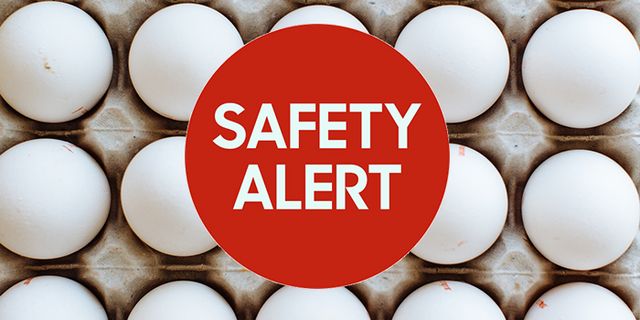The Egg Recall is a significant public health concern that arises periodically due to contamination issues or safety concerns. Such recalls are critical to ensuring consumer safety and maintaining trust in the food supply chain. This article explores the recent trends in egg recalls, the reasons behind these recalls, the potential health risks, and the measures taken to prevent contamination and safeguard public health.
Recent Trends in Egg Recalls

Egg recalls have become a recurrent issue, with multiple incidents reported globally. These recalls often involve large quantities of eggs distributed across wide geographic areas, affecting numerous consumers and retailers. Recent recalls have been prompted by various factors, including contamination with harmful bacteria, detection of chemical residues, and packaging defects.
- Salmonella Contamination: One of the most common reasons for egg recalls is contamination with Salmonella bacteria. These bacteria can cause severe foodborne illnesses, leading to symptoms such as diarrhea, fever, and abdominal cramps. Large-scale recalls have been triggered by outbreaks of Salmonella traced back to contaminated eggs.
- Chemical Residues: Eggs contaminated with chemical residues, such as pesticides or antibiotics, pose another significant risk. These chemicals can enter the food chain through improper use in poultry farming. Recalls are issued to prevent potential health risks from consuming contaminated eggs.
- Packaging Defects: Defects in egg packaging, such as cracks or improper sealing, can lead to contamination during handling and storage. Recalls due to packaging issues are less common but still pose a risk to consumer safety.
Causes of Egg Contamination
Understanding the causes of Egg Recall contamination is crucial for preventing future incidents. The primary sources of contamination include:
- Infection in Poultry: Hens infected with Salmonella can lay contaminated eggs. The bacteria can be present on the eggshell or inside the egg, making it essential to control infections within poultry farms.
- Poor Farm Hygiene: Unsanitary conditions in poultry farms can contribute to the spread of bacteria and other contaminants. Proper cleaning and disinfection practices are essential to maintain a hygienic environment and reduce the risk of contamination.
- Cross-Contamination: Eggs can become contaminated during handling, processing, or packaging. Cross-contamination can occur through contact with contaminated surfaces, equipment, or other food products.
- Improper Use of Chemicals: The use of pesticides, antibiotics, or other chemicals in poultry farming must be carefully regulated. Improper use or accidental contamination can result in chemical residues in eggs.
Health Risks Associated with Contaminated Eggs
Consuming contaminated eggs can pose serious health risks, particularly for vulnerable populations such as young children, the elderly, pregnant women, and individuals with weakened immune systems. The main health risks include:

- Salmonella Infection: Salmonella is a leading cause of foodborne illness worldwide. Ingesting contaminated eggs can lead to salmonellosis, characterized by symptoms such as nausea, vomiting, abdominal cramps, diarrhea, fever, and headache. Severe cases can result in hospitalization and, in rare instances, death.
- Chemical Toxicity: Exposure to chemical residues in eggs can cause adverse health effects, depending on the type and concentration of the chemicals. Long-term exposure to certain chemicals can increase the risk of chronic health conditions, including cancer and reproductive issues.
- Allergic Reactions: Some individuals may experience allergic reactions to contaminants present in eggs. Symptoms can range from mild, such as skin rashes, to severe, such as anaphylaxis.
Preventive Measures and Regulatory Actions
To mitigate the risks associated with egg contamination and ensure consumer safety, several preventive measures and regulatory actions are implemented by governments, food safety authorities, and the poultry industry:
- Strict Hygiene Practices: Maintaining high standards of hygiene in poultry farms is essential. This includes regular cleaning and disinfection of facilities, equipment, and transportation vehicles, as well as proper disposal of waste.
- Monitoring and Testing: Routine testing of eggs and poultry for bacterial contamination and chemical residues helps identify potential issues early. Monitoring programs are essential to ensure compliance with safety standards.
- Vaccination of Poultry: Vaccinating hens against Salmonella can significantly reduce the risk of infection and subsequent contamination of eggs. Vaccination programs are an important preventive measure in poultry farming.
- Regulatory Oversight: Government agencies and food bosjoko safety authorities play a crucial role in enforcing regulations and conducting inspections. They ensure that poultry farms, processing facilities, and retailers comply with safety standards and take corrective actions when necessary.
- Traceability Systems: Implementing traceability systems allows for the rapid identification and recall of contaminated eggs. These systems track eggs from the farm to the point of sale, enabling quick response in case of contamination incidents.
- Consumer Education: Educating consumers about safe handling, storage, and cooking of eggs is vital. Consumers should be aware of the importance of refrigerating eggs, avoiding raw or undercooked eggs, and practicing good kitchen hygiene.
Steps to Take During an Egg Recall

When an egg recall is issued, it is important for consumers to take specific steps to ensure their safety:
- Check Recall Notices: Stay informed by checking recall notices issued by food safety authorities or retailers. These notices provide details about the affected products, including brand names, batch numbers, and expiration dates.
- Dispose of Recalled Eggs: If you have eggs that are part of a recall, do not consume them. Follow the instructions provided in the recall notice for proper disposal or return the eggs to the place of purchase for a refund.
- Clean and Disinfect: Thoroughly clean and disinfect any surfaces or containers that may have come into contact with the recalled eggs to prevent cross-contamination.
- Monitor Health: If you have consumed recalled eggs, monitor your health for any symptoms of foodborne illness. Seek medical attention if you experience symptoms such as nausea, vomiting, diarrhea, or fever.
Conclusion Egg Recall
Egg recalls are a critical aspect of food safety, aimed at protecting consumers from potential health risks associated with contaminated eggs. Understanding the causes of contamination, the associated health risks, and the preventive measures in place can help consumers make informed decisions and ensure their safety.
As regulatory agencies and the poultry industry continue to enhance safety standards and practices, the goal is to minimize the occurrence of egg recalls and maintain the trust of consumers in the food supply chain. Through collaborative efforts and vigilance, the safety and quality of eggs can be upheld, ensuring a safer food environment for all.
Read More Article About “Mahua Moitra: The Voice of Boldness and Integrity in Indian Politics“

























